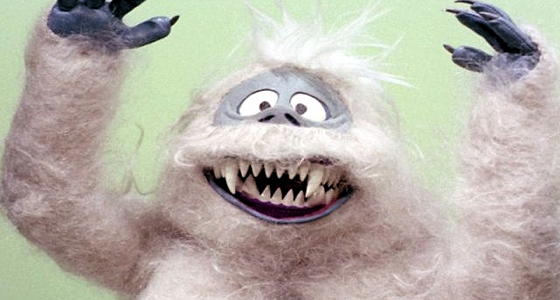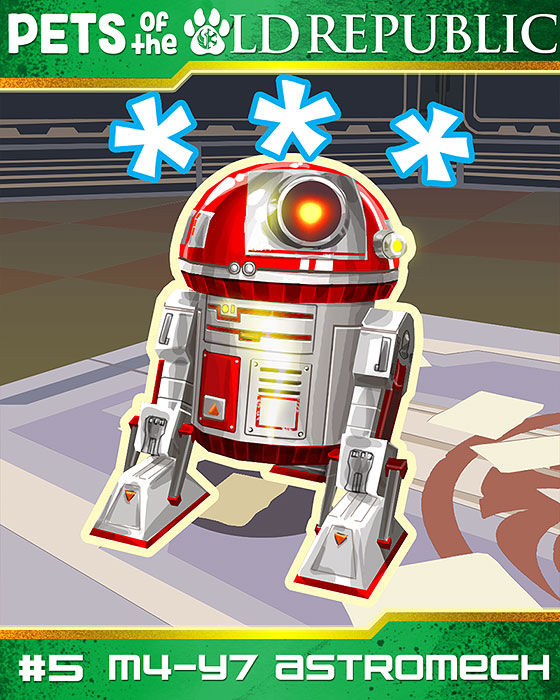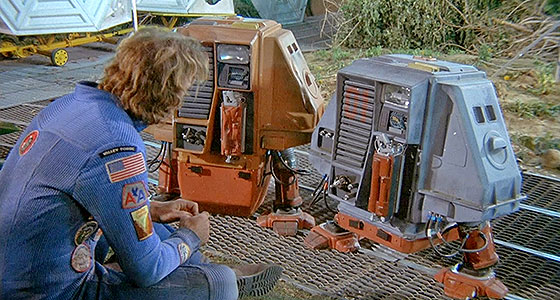While it is still fresh in my mind, I thought I’d share some thoughts about the recently concluded Disney+ Star Wars series The Acolyte. Beware there shall be spoilers ahead!
Overall, I thought it was very good and very interesting to watch, especially as a long time Star Wars fan. If Andor and Rogue One are the Star Wars stories for people tired of the Jedi, The Acolyte is the complete opposite; it dives deeper into the questions around the Jedi than any other live action or animated Star Wars story. It poses questions I’ve asked myself, and it goes to places about which I’ve long wondered.

The Acolyte was created by Leslye Headland whose last show Russian Doll I really enjoyed, so I was prepared to give The Acolyte as much space as it needed to tell its story. The cast is very strong, with a diverse group of actors bringing to life an era of Star Wars previously unexplored in live action. Amandla Stenberg does a good job in her dual role and I really like how you can tell Mae and Osha apart without difficulty, until, of course, you can’t. Lee Jung-jae is terrific as Master Sol. The entire show would fall apart if all of Sol’s strengths and weaknesses aren’t given an empathic and relatable face, and he expresses the flawed, beating heart that holds all these contradictions together until it breaks. The cast is rounded out by faces familiar from Russian Doll and other popular media, but I want to single out Dafne Keen who makes Jecki instantly likeable and wise beyond her years and Manny Jacinto who is clearly reveling in the role of the sneering villain and chewing just the right amount of scenery.
Many of the Disney+ Star Wars series have been rightly criticized for their smaller and confined settings, but I think The Acolyte, and Ahsoka just before it, show that they are working to broaden the scope of their environments in post-lockdown Hollywood. Neither show quite matches the reach of Andor, but it feels much more expansive than the recent Mandalorian seasons.
Otherwise the costumes, special effects and set design is as excellent as you’d expect from a modern production. I’m always happy to see another Wookiee, and Bazil the Tracker feels right at home in the Star Wars universe. Something about the prequels that always disappointed me was that the Jedi’s costumes embraced the brown bathrobe aesthetic a bit too much, depicting the Jedi in their prime as rather more drab than I’d always hoped to see. The Acolyte’s Jedi garb follows the tone set by other High Republic stories and the characters’ costumes display more color with vivid gold accents, bright white cloaks and individual expression.
I’ll go into more depth below about the things I found interesting about The Acolyte, but it’s not perfect. There are moments that the show just races by that I wish it had lingered on more: Mae’s arrival on the Stranger’s planet at the end of the first episode feels abrupt, and I wish young Osha’s interactions with the Jedi on Brendok were explored more fully, for example the scene in which she meet Kelnacca the Wookiee feels like it needed at least one more beat to show the characters actually connecting.
Some of the action of the first episode feels unnecessary; the prison-ship sequence shows Osha’s resourcefulness and kind heart I suppose, but it also feels like it just serves to delay the reunion of Osha and Sol, which is when the show’s story really gets into gear.
I also found the season’s ending in which Osha and Mae are separated again somewhat contrived. That Osha would choose to go with the Stranger and leave her sister behind didn’t quite work for me. Clearly the story is not over yet, but splitting them up feels like an awkward reset of their journeys, even if they have swapped their relative places.
Cinematic Influences
The Acolyte has a whole raft of influences many of which are familiar to Star Wars fans. The Acolyte fully engages with the messy practices of the Jedi as seen in the prequels and the history of the Jedi from both the High Republic and the Old Republic eras.

The Acolyte draws on a wealth of Star Wars lore, but in a way that feels unobtrusive to me. As a Star Wars nerd, I had many moments of recognition. “Hey, did he just quote the Sith code?” “Wait, is that Cortosis?” “Ooh, I bet I know who that creepy dude in the shadows is!” But here’s the thing, you do not need to be in on the jokes to understand the show’s meanings. The Stranger’s identity was not meant to be a surprise. You don’t need to read a decades old novel to understand how the metal helmet works; it’s clearly communicated in the action of the show. And, look, the creepy dude lurking in the shadows is just some creepy dude lurking in the shadows. You should be able to draw your own conclusions on what he is without having someone on the internet explain it to you.
Star Wars traditionally has been inspired by samurai movies, but The Acolyte also draws on influences from Chinese action cinema and “Wuxia” stories of fantastic martial artists. I’m sure it’s no accident that Carrie-Anne Moss, the star of The Matrix, the most famous American film influenced by Chinese martial arts movies, was cast as Master Indara. Moreover, The Acolyte’s very first action scene was a loving tribute to the teahouse battle from Crouching Tiger, Hidden Dragon. The Acolyte‘s young protagonists being torn between and forced to account for the mistakes of the older generation is a theme very similar to Ang Lee’s movie.
These influences mean that The Acolyte‘s action choreography is very good, especially for a TV show. If you’ve always wanted more Kung Fu in your Star Wars, you’ll enjoy the fight scenes in The Acolyte. The centerpiece of the series is the battle in the woods on Khofar in the episode Night; it is as absolutely thrilling, tense and heartbreaking a set piece as any similar sequence you might find on any TV series or even in most action movies.
Some of the influences go even deeper and farther back. Twins and siblings, both literal and metaphorical, are important in other Star Wars stories, most famously Luke and Leia, but also the Dyad of Ben and Rey in the sequels or Arcann and Thexan from SWTOR. But the exploration of twins and the strength of their bonds goes back thousands of years into the myths of our cultures including Castor and Pollux ancient Greek heroes with divine parentage and a bond that transcended death, or Romulus and Remus, the contentious twins central to the stories of Rome’s founding.
Likewise the stories of twins from Shakespeare’s Twelfth Night to the modern classic The Parent Trap also play with twins and mistaken identity. The Acolyte embraces this whole-heartedly. Both Osha and Mae pretend to be the other sister, but the theme of opposites and dualities as reflections are baked into every aspect of the show from the titles of the episodes: Lost/Found, Revenge/Justice, Teach/Corrupt, Day and Night, Destiny and Choice to Osha’s tattoo, which I interpret to be a simplified and abstracted depiction of the butterfly from the girl’s favorite tree on Brendok, but it is split in two with the wing shapes reflecting their opposite sides. The metaphor is very much on the nose.

Likewise the Stranger and Master Sol are reflections of each other, they both have two faces, one of which they struggle mightily to keep hidden. The story reaches its climaxes when their masks come off, and their roles are reversed. Master Sol’s two faces aren’t quite as obvious as the Stranger’s, but the show does suggest that he is not quite the flawless hero you might assume he is. Several times during the season, The Acolyte alludes to key moments from the original trilogy, and in each case Sol is cast in the part of Darth Vader. On Carlac, Sol reaches out to catch a falling Osha as Vader reaches out to a falling Luke Skywalker on Bespin. During Sol’s duel with Mae on Olega, he can sense that Mae’s thoughts turn to her sister; Vader sensed the exact same thing from Luke during their duel over Endor. Back on Brendok, both Mae and Osha’s final confrontations with Sol directly echoes the climax of Return of the Jedi with Luke, Vader and the Emperor. Heck, even Sol’s hair flares out around his head to give a similar silhouette to Vader’s helmet. None of this strikes me as accidental. The Acolyte suggests almost from the get-go, that Sol is tinged by darkness. He’s not a Dark Lord of the Sith, but he’s hardly pure of heart either.
As for Osha and Mae, they are more than just twins; Sol argues they are one person split in two through the power of their mothers and the Vergence in the Force on Brendok. While they briefly exchange identities early in the story, they completely swap their positions relative to the light and the dark sides of the Force during the finale. This is overtly foreshadowed through the poem the two have shared with each other since childhood, and made explicit when Osha’s droid companion Pip and the tracker Bazil begin treating Mae as they would Osha. In the finale, Mae abandons her quest for revenge which kicked off the story, only to have Osha turn to the dark side before our eyes and complete her sister’s mission.
What is it with the Jedi, Anyway?
I’m certain I’m not the only Star Wars fan that has wondered about the practices of the Jedi when it comes to how and when they recruit new members. I remember being confused that Anakin, a nine year old, was considered too old to join the Jedi in The Phantom Menace. “How young are they taking these kids?” and “What about their parents?” were common questions that came up in conversations around the prequels. And for the most part, Star Wars stories since then typically steer clear of those issues, because it is weird no matter how you answer those questions.

When thinking about them and wondering about the emotionally stunted upbring most Jedi seem to have experienced, I’ve often been amazed that the Jedi weren’t producing Darth Vaders at a record pace. As we’ve seen in Star Wars over the years, they kind of were. Fallen, disgraced and expelled Jedi are all over the place, from Count Dooku and Baylan Skoll in live action to the corrupted Inquisitors of the Dark Times and Revan of the Old Republic.
The Acolyte dives head first into the murky waters around those questions. How can any child possibly have the understanding and experience to make the life altering decision to become a Jedi at such a young age? And what if the parents disagree? What if one parent disagrees with the other? What if the Jedi disagrees with any of the involved parties?
These are tough questions. The Acolyte asks them all, and the answers are messy, unsatisfying and tragic.
It’s not cut and dried. The coven on Brendok is not identified as being Dathormir Witches, but they are coded in such a way as to cause viewers familiar with the villains of The Clone Wars and Ahsoka to make that association. The leaders of the coven, Mothers Aniseya and Koril act to protect their family and their community, but they are very, very aggressive in their reactions to the Jedi.
The Jedi are hardly without sin. Even given the benefit of the doubt, they are presumptuous, and they trespass and intrude uninvited. Moreover, I think The Acolyte argues that the Jedi are raised in a way that they simply cannot properly process their feelings or soothe them in others. Torbin is homesick. Who can’t relate to that? Apparently, the Jedi can’t. Sol is worried about Osha. That’s a good thing. But he isn’t able to step back and see the big picture before he draws his lightsaber.
The tragedy is that the Coven and the Jedi were drawn to Brendok for the exact same reason. Something miraculous happened there and instead of seeking common ground, the Jedi over-reached and the Coven over-reacted.
The Jedi compound tragedy with obfuscation and arrogance. The show draws a bold, straight line from the events on Brendok to their self-inflicted fall in the prequels. Ki-Adi Mundi appears on The Acolyte not to break continuity but to be as wrong about things here as he was in The Phantom Menace. Vernestra is hiding things from the Senate in exactly the same way Yoda did in Revenge of the Sith. In the finale Senator Rayencourt lays it out in no uncertain terms for anyone who missed it the first time.
As a long time fan, I find this interesting. Not many Star Wars stories choose to fully engage with the strangeness of the prequels, perhaps for good reason. But I always like it when Star Wars is strange. Strange creatures, alien planets, and space-magic, I dig it all. I don’t think The Acolyte fully succeeds, but I appreciate that it tries to embrace the weird and uncomfortable aspects of the lore. So many Star Wars stories take themselves too seriously and to my tastes, they come across as dry and lifeless. The Acolyte is messy and alive, and I’ll take that any day.
Old Republic Influences
I’m not saying Leslye Headland mains a Consular in Star Wars: The Old Republic, but it kind of feels that way. My favorite SWTOR character is my Consular, and maybe my bias is showing, but there were many aspects of The Acolyte that I recognized from SWTOR. Both Osha’s and the Consular’s stories are set in motion by their masters’ expeditions to mysterious Force-shrouded worlds that end in death and tragedy. In both cases the Jedi conspire to keep the truth of what happened secret and years later the next generation must face the consequences of those actions. There are significant differences, of course, but the similarities don’t end there.

On Tython, the Consular witnessed an apparition turn to smoke and vanish in a manner not unlike the Mothers demonstrated on Brendok. Likewise, Kelnacca is controlled by the Coven and made to attack his allies; while it probably wasn’t caused by Terrak Morrhage’s dark plague, Master Indara does use the Force to free Kelnacca of the domination in a way that to me specifically recalls the Consular’s shielding technique that is central to Act One of their story. And that suddenly breaking the connection has violent and tragic implications recalls a certain infamous Dark Side choice players can make after their confrontation with Lord Vivicar.
It doesn’t stop there. both Revan in Knights of the Old Republic and Mae in the finale seem to have their memories erased in similar ways. And finally, after the disasters that turned Brendok and Nathema into wastelands, mysterious Force empowered explosions of life has somehow rejuvenated both worlds. These are just the similiarities I noticed, but I suspect there are more.

I’ve seen some fans react negatively to the Jedi in The Acolyte being portrayed as flawed and imperfect. But as a SWTOR veteran, that’s old hat to me. Jedi doing the wrong things for the right reasons or the right things for the wrong reasons are all over the game. My Consular has great fondness for Yuon Par, but if she’d told someone, anyone, what happened on Malachor Three, so many lives would’ve been saved. On Hutta, the Sith Warrior can shatter Jedi Master Nomen Karr’s facade of self-righteousness with just a few words. And anyone who’s played the Bounty Hunter story knows that Jedi Jun Seros is just as vengeful and violent as any Sith.
And I’m not even considering the choices players make for their own characters. SWTOR is all about exploring shades of grey in the Star Wars universe.
But SWTOR is not just about falling into darkness. It’s also about the struggle to make it back to the light. Tau Adair is haunted by her actions in wartime, but grapples every day with her demons to find a new path. Darth Marr, one of the most powerful Dark Lords of the Sith in the game’s canon, turned to the light in his last moments and his spirit persists as a Force ghost. Sol, for all of his faults, explains it simply to the Padawans he teaches on Coruscant: the Force is as powerful and raging as fire, you find balance in the Force not when you quench or control the flame, but when you respect its power, weight and uncertainty. Sol claims he made his peace with what happened on Brendok, but his fear of the spark he lit there never left him, and in the end it consumed him.
The Acolyte‘s ending is a bit of a bummer, but clearly its story is not over. A second season has not been announced, but I feel like it’s bound to happen. Will Osha and Mae’s split spirits unite into a single whole like Revan’s did in SWTOR‘s Shadows of Revan expansion? Probably not, but I do hope they find their balance. Their journey is just beginning and I’m very curious to see where it takes them.






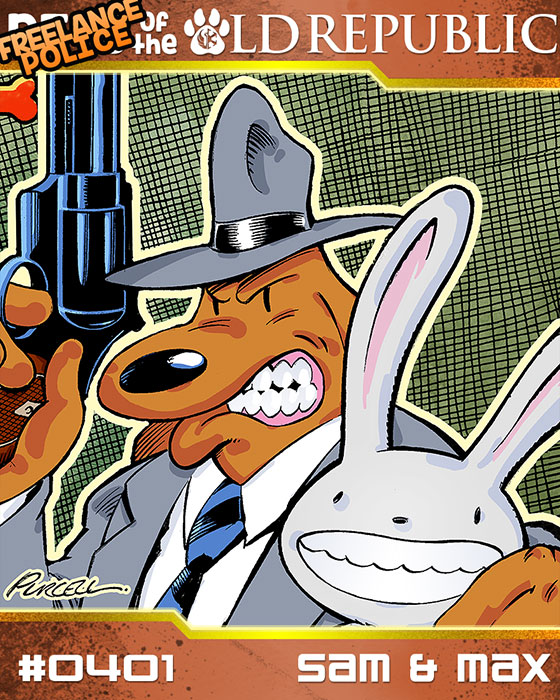
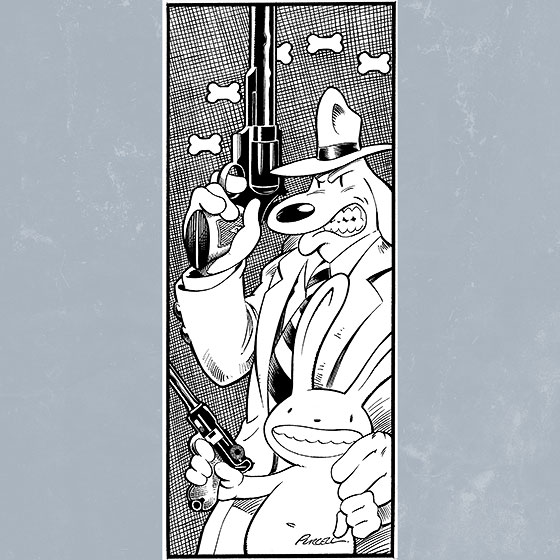



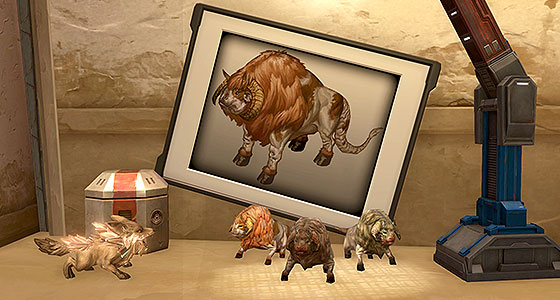
 I would be shocked to learn that Leia’s line in The Empire Strikes Back intentionally referenced a Nerf Ball, but calling someone a “Nerf Herder” always struck me as funny, not because I thought Leia was calling Han a hick farmer, but because it seemed to me that she was saying that the only task up to his speed was wrangling harmless, soft foam toys with which even the smallest child could be trusted. It’s a job so easy, even Han Solo can’t screw it up.
I would be shocked to learn that Leia’s line in The Empire Strikes Back intentionally referenced a Nerf Ball, but calling someone a “Nerf Herder” always struck me as funny, not because I thought Leia was calling Han a hick farmer, but because it seemed to me that she was saying that the only task up to his speed was wrangling harmless, soft foam toys with which even the smallest child could be trusted. It’s a job so easy, even Han Solo can’t screw it up.











